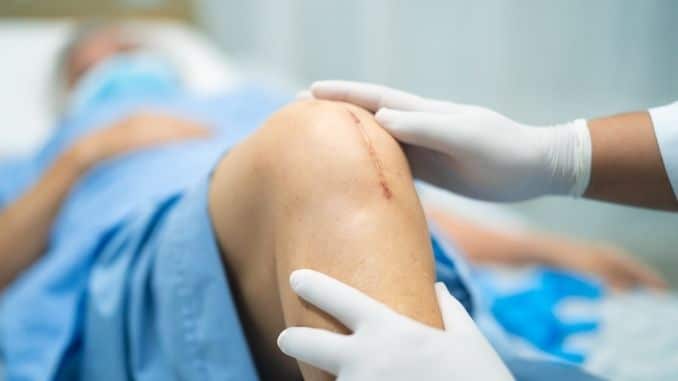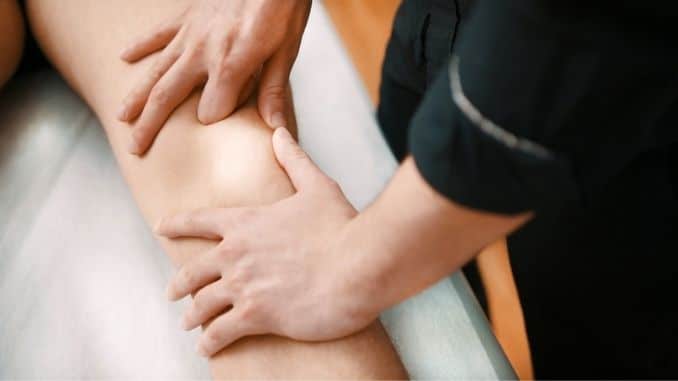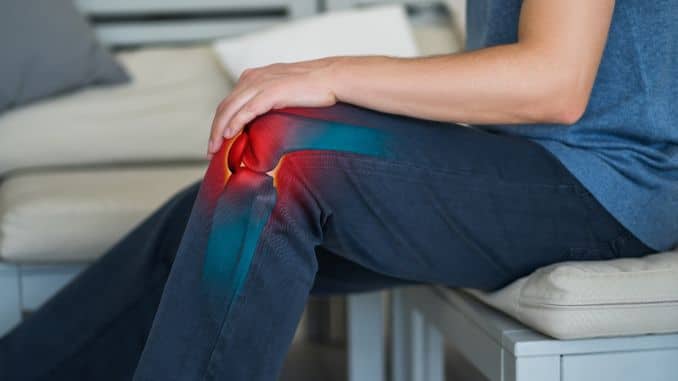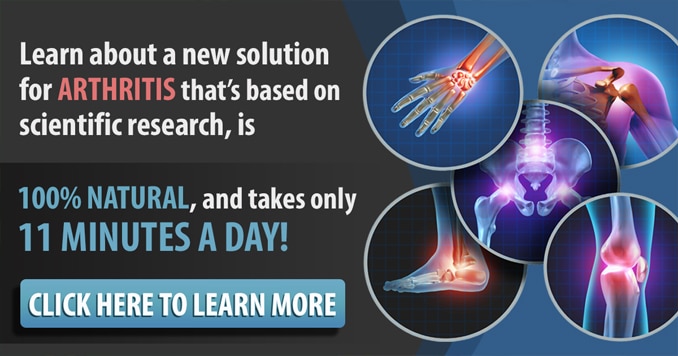Osteoarthritis (OA) [1] is the most common type of arthritis, affecting millions worldwide. The Stages of Osteoarthritis commonly occur in the knee joints, hip joints, hand joints, and then carpometacarpal joints.
OA develops gradually as the articular cartilage that cushions the bones wears down, leading to joint pain, stiffness, swelling, and then joint deformity.
Doctors classify osteoarthritis into four stages based on radiographic appearance, symptoms, and then functional changes.
Understanding the stages of osteoarthritis can help patients explore the right treatment options for pain relief and then improved quality of life.
Stage 1: Early Osteoarthritis
Symptoms and Signs
- Mild stiffness after long periods of rest.
- Little or no noticeable joint pain.
- Small bone spurs may appear, but symptoms are minimal.
Diagnosis
- The physical exam shows little or no limitation.
- X-rays may reveal very early radiographic findings of bony growths.
- Synovial fluid [2] and then joint capsule remain healthy.
Treatment
- Lifestyle changes: weight loss, healthy diet, and then low impact exercises like walking or tai chi.
- Strength training and use of knee support to protect affected joints.
- Physical therapist guidance to maintain flexibility during the stages of osteoarthritis.
- Over-the-counter medications for mild pain relief.
Stage 2: Mild Osteoarthritis
Symptoms and Signs
- Noticeable stiffness after activity.
- Mild joint space narrowing in the affected joint.
- Increasing knee pain or hip discomfort after weight bearing.
Diagnosis
- Radiographic osteoarthritis signs such as joint space narrowing suggestive of cartilage thinning.
- Blood tests to rule out rheumatoid arthritis and then psoriatic arthritis.
- Joint fluid analysis to distinguish primary osteoarthritis from secondary osteoarthritis.
Treatment
- Low impact exercise and weight management to reduce stress on joints.
- Knee support braces for stability.
- Joint injections (corticosteroids or hyaluronic acid) to relieve pain.
- Close monitoring with a healthcare provider to prevent worsening.
Stage 3: Moderate Osteoarthritis
Symptoms and Signs
- Persistent joint pain after activity, especially in knee and hip osteoarthritis, is relieved by rest.
- Swelling, tenderness, and reduced range of motion.
- Heberden’s nodes [3] in hand osteoarthritis.
- More friction and stiffness limiting daily activity.
Diagnosis
- X-rays show clear joint space narrowing and subchondral sclerosis.
- Imaging tests such as MRI scan reveal cartilage loss.
- Physical exam demonstrates restricted mobility.
Treatment
- Joint injections (corticosteroids, hyaluronic acid, platelet-rich plasma).
- Physical therapy with mobility and then strengthening exercises.
- Anti-inflammatory medications for pain management.
- Bone realignment surgery (osteotomy) may be considered, especially for younger patients.
Stage 4: Severe Osteoarthritis
Stage 4 osteoarthritis is considered the advanced stage or end-stage OA.
Symptoms and Signs
- Severe knee pain or hip pain, even at rest.
- Extreme stiffness, swelling, and joint deformity.
- In the advanced stages of osteoarthritis, there is significant loss of mobility and then difficulty performing daily tasks.
Diagnosis
- Radiographic findings show almost no joint space.
- Cartilage is nearly gone, exposing bone-on-bone friction.
- Joint fluid is greatly reduced, worsening pain.
- Systematic reviews highlight this as the stage where surgical intervention is most common.
Treatment
Stage 4 arthritis knee treatment options include:
- Total knee replacement (arthroplasty) – damaged joint replaced with metal and plastic components.
- Bone realignment surgery (osteotomy) – shifts weight away from the most damaged areas.
- Joint replacement for hips, knees, or other severely affected joints.
- Bone marrow aspirate concentrate or mesenchymal stem cell therapy – regenerative options still under research.
- Water aerobics and swimming to maintain joint function with less stress.
- Lifestyle adjustments and medications to reduce pain and maintain mobility.
Dr. Constance R. Chu, Professor of Orthopaedic Surgery at Stanford University, Director of the Joint Preservation Center. She focuses on proactive treatment of joint pain, especially after injuries, to prevent knee osteoarthritis.
“We need to shift from just treating osteoarthritis once it’s already severe — stage 4 — to preserving joints early on. Imaging and regenerative medicine allow us to identify risk and intervene sooner to prevent cartilage damage, reduce the need for joint replacement, and maintain mobility.”
Risk Factors for Osteoarthritis
- Aging and long-term wear.
- Obesity, which stresses weight bearing joints.
- Previous injuries to knees, hips, or hands.
- Family history or genetic predisposition.
Treatment Options for Stage 4 Knee Osteoarthritis
1. Mesenchymal Stem Cells or MSCs
This is the newest technology in the treatment of osteoarthritis. Your bone marrow makes these types of cells. They can grow into new tissues, including cartilage. By gathering these cells and injecting them into the knee joint, the hope is that they will create new cartilage and reduce inflammation.
It’s a hot area with clinical trials still being conducted, but most studies are still in the early stages. As such, the success rate of treatment is yet to be determined.
2. Bone Realignment Surgery or Osteotomy
This is one treatment options for people with stage 4 severe osteoarthritis of the knee. During this surgery, a surgeon cuts the bone above or below the knee to shorten it, lengthen it, or change its alignment.
This surgery shifts the weight of your body away from the points of the bone where the greatest bone spur growth and then bone damage has occurred. However, this surgery is more often done in younger patients.
3. Total Knee Replacement or Arthoplasty
This is the last resort for most patients with severe OA of the knee. During this procedure, a surgeon removes the damaged joint and replaces it with a plastic and metal device.
Side effects of this surgery include infections at the incision site and blood clots. Recovery from this procedure takes several weeks or even months and requires extensive physical and occupational therapy.

4. Bone Marrow Aspirate Concentrate
This procedure draws on the same concept as MSCs. Experts take cells from your body and use them to stimulate the healing process inside your knee during the different stages of osteoarthritis, including stage 4 arthritis knee treatment.
The advantage of this procedure is that bone marrow may be easier to obtain than MSCs, and also contains other substances involved in promoting cartilage regrowth and calming inflammation.
While it’s still a new approach, a number of studies have found “good to excellent overall outcomes”. The downside is that some trials were tougher than others, so they recommended that the treatment be used cautiously, given so much is still unknown.
It is up to your discretion, however, if you wanted to try this kind of treatment. It is expensive but may be worth trying.
5. Botox Injections
This is also one of the treatment options for stage 4 knee osteoarthritis. Botulinum is a toxin made by the bacterium, Clostridium botulinum. Because it can shut down nerve cells, doctors can use it to ease muscle spasms. This may help with the pain that you may be experiencing, which your PT may have suspected as sciatica.
Please note that an MRI has no capability of detecting nerve involvement. However, there is a new technology out there that does have the ability to image nerves, called Magnetic Resonance Neurography (MRN).
Some doctors are trying botulinum to help treat joint pain. The theory is that it might permanently deaden nerves and offer relief without affecting the knee’s structure.
Osteoarthritis is a degenerative condition. It is progressive and not reversible. Band exercises will help in terms of strengthening the structures surrounding your knee, but this will not stop osteoarthritis. The symptoms can be effectively managed or delayed with exercises, but this will not stop the condition per se. This is why knee surgery is often recommended when all other treatments have been exhausted.
6. Swimming or Water Aerobics
Swimming or water aerobics can be an effective way to manage arthritis pain while helping to build muscle strength and maintain mobility. Water exercises are helpful due to:
- Buoyancy: Buoyancy counteracts gravity, thereby decreasing the weight placed on painful joints and the spine. In fact, when immersed to neck level, buoyancy supports 90 percent of the body’s weight, and in waist-depth water, buoyancy can support 50 percent of your body weight. One of the many advantages of exercising in water is that diminished weight-bearing stress helps aide in strengthening weak muscles and improving balance and confidence.
- Resistance: Water can provide up to 15x more resistance than air. It provides a very safe, accommodating resistance, which means that the harder you push against the water, the more resistance you will get. This drug resistance can help build muscle strength and endurance throughout your body.
- Temperature: Everybody knows how great it feels to soak in a warm, soothing bath. For someone who suffers from chronic pain, warm water is the best place to exercise. Colder water tends to cause muscles to tense up. Experts believe that if people with arthritis spent more time in warm water, they’d be able to move better with less pain.

Exercise truly can help manage arthritic pain. You may find this article beneficial as it discusses how exercise can help with arthritic pain.
Additional Tips for Relieving OA Knee Pain
- Listen to your body and then adjust your activities as necessary, especially if you’re managing stage 4 osteoarthritis.
- Stick with gentle exercises that strengthen the muscles around your knees.
- If you feel increased pain, stop and rest. If joint pain continues hours after you’ve stopped, you are overexerting your knee.
- Increase your activity level throughout the day by walking whenever possible.
- Use over-the-counter anti-inflammatory medications for your knee pain.
- In addition, make sure you get a good night’s sleep.
- Manage your weight: Extra pounds can be a burden on your knee.
- Check with your doctor if you think it may be necessary to use a cane.

Remember that not everyone will respond to the different treatments available in the same way, so it is important to find the option that works best to help manage your pain and discomfort. Work with your doctor to see what choices might be most effective for your specific condition, and then consult with a rheumatologist if needed.
Final Thoughts
Osteoarthritis is a progressive condition and the most common form of arthritis, but patients have multiple options to relieve pain, reduce inflammation, and then maintain mobility.
From early stage OA managed with lifestyle changes and physical therapy to advanced stage OA requiring joint replacement surgery, there are treatments to fit every level of severity.
Furthermore, always consult with a healthcare provider or rheumatologist for a proper diagnosis and a personalized plan. With the right approach, you can protect your joints, reduce pain, and then enjoy a better quality of life.
Don’t let arthritis control your life — take the first step toward pain-free living today! The Arthritis Handbook gives you proven exercises, expert guidance, and simple lifestyle tips to ease stiffness and restore your mobility. Start moving comfortably again — get your copy now!
Frequently Asked Questions
What causes knee osteoarthritis and what are the main risk factors?
Causes include breakdown of articular cartilage, reduced synovial fluid, wear and then tear of weight-bearing joints.
Risk factors: aging, obesity, joint injury, genetics, overuse, joint deformity, inflammatory arthritis (like psoriatic arthritis or rheumatoid arthritis) and secondary osteoarthritis.
How is osteoarthritis diagnosed, especially in advanced stages?
Diagnosis is based on a combination of: physical exam; imaging tests like X-rays (showing joint space narrowing, bone spurs, subchondral sclerosis, deformity), MRI in earlier stages to detect cartilage and soft tissue changes; radiographic osteoarthritis assessments (e.g. Kellgren-Lawrence system); lab tests and joint fluid analysis to exclude other types (e.g. autoimmune).
What are the treatment options for stage 4 osteoarthritis (severe stage)?
Treatment options include total joint replacement (knee or hip arthroplasty), bone realignment surgery (osteotomy), strong pain management, possibly joint injections or experimental regenerative therapies, physical therapy, lifestyle changes to relieve pain and improve function.
Can osteoarthritis be prevented or slowed before it reaches stage 4?
Yes. Early interventions like weight loss, low impact exercises, strength training, joint protection/bracing, avoiding joint injuries, and monitoring with imaging can slow progression. Early diagnosis is key.


